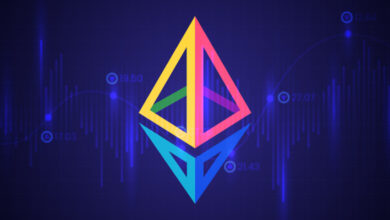Hedera Hashgraph; The Blockchain with no Blocks ushers in era of trusted Internet

UNLOCK met with Tom Trowbridge President of Hedera Hashgraph, to talk about what he says is the best Distributed Ledger technology platform out there today. On the website Hedera dubs itself as the trust layer of the internet. Trowbridge explains, “Since 2012, we have been developing the next generation of distributed ledger technology.
The Hashgraph uses an algorithm developed by Professor Leemon Baird who is also Co-founder and CTO of Swirlds the company that manages and patented Hedera Hashgraph. The algorithm allows a distributed and decentralized community to reach consensus between nodes/members very fast (100,000 transactions per second). When it comes to security it uses Asynchronous Byzantine Fault Tolerant”. It uses Virtual Voting, a voting system – without having to do the votes, to achieve consensus Hashgraph uses a protocol called “Gossip about Gossip”
Using a gossip protocol, nodes efficiently and rapidly exchange data with other nodes in the community. This automatically builds a hashgraph data structure using the novel “gossip about gossip” protocol. This data structure is cryptographically secure and contains the history of communication in a community. Using this as an input, nodes run the same virtual-voting consensus algorithm as other nodes. The community reaches consensus on the order and timestamp without any further communication over the internet. Each event is digitally signed by its creator.
Trowbridge, “Hedera Hashgraph uses what we call DAG (Directed Acyclic Graph), a directed graph data structure that uses a topological ordering. The sequence can only go from earlier to later. DAGs don’t use blocks or miners which make it faster, more secure and less subjected to centralization.”
Trowbridge adds, “As such Hedera will enable developers to build an entirely new class of decentralized applications. It offers three basic features; cryptocurrency, smart contracts, and file storage.”
Unlike other blockchain protocols, HBAR is speedy and efficient with lower fees because less energy is used. Trowbridge explains,” Because of the speed and efficiency low cost micropayments become practical on the platform; HBAR is a utility token because developers will use it to pay for services on the network.”
Trowbridge, “We are still in early stages but already have signed up CULEDGER, a group of 20 credit unions to build their global ledger for cross border payments. This is 6000 member institutions, and over 105 million members. We already have as well developers building DAPPs on our network. We see Hashgraph as excellent for payments industry, supply chain, IOT, and our closest competitor would be Stellar.”
There are two issues that Hashgraph meets with some criticism, its centralized nature and privacy issues. As such the company has set to resolve this by creating a governance council where council members change each three years. Trowbridge, “Our council governance model is bound by two core principles, decentralization and stability. The elected governing board will come from top Fortune 100 companies and other well respected organizations that will have custody over the network for 3 years. The elected Governing Board will govern the council by establishing policy for council membership, regulating the network rules and tokens, and approving changes to the platform codebase. Governance is designed to uphold the philosophy of decentralization, and prevents the consolidation of power over the process by which full nodes reach agreement on the transaction order in the platform.” He adds, “We are ensuring diversification by choosing members from 10 different geographies, 18 different sectors so we will have 39 companies that lead the governing council.” In addition, the council members will not own tokens.”
As Trowbridge explains, “We are in advanced discussions to sign 20 Letter of Intents with trusted global brands, from a total of 29 that we are in discussions with. We are in discussions with companies from all over the world including Australia, Korea, Japan, India, USA, South America, and even Africa and MiddleEast.”
Finally Hedera Hashgraph will rely heavily in its success on developers. In recent months they announced their public release of the Hedera SDK in Java. The SDK is open sourced under an Apache 2 license. With the SDK, developers can now begin to develop Hedera-based applications for use on the Hedera platform. In addition Hedera Hashgraph held its developer conference hedera18 in October.
While there may be a lot of other players in the same realm including names such as IOTA, IOT Chain, Byteball, Fantom and others, Hedera Hashgraph looks to be a promising platform for the next generation of decentralized internet.





